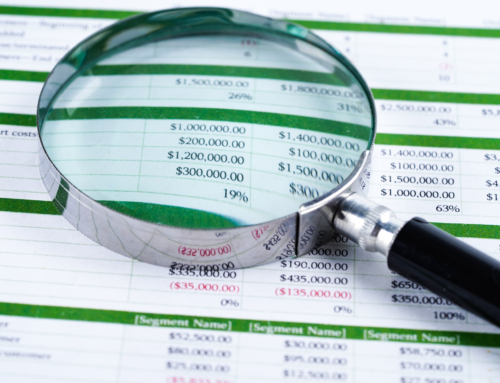Have you ever zoned out at the CPA’s office because what they were saying made no sense, or felt like you had to ask a dumb question because they keep using a word that you are unsure of the meaning? We’ve compiled a list of the most-used and most-needed terms that should help you navigate your CPA’s terminology – and ours is in plain language, so it’s easy to understand!
Gross Revenue
This is all the money that was generated doing what your business does without any deductions. If you are profitable, this will be the largest number on your income statement!
Cost of Goods Sold vs. Operating Expense
As you can imagine, any direct cost to what you sell is the cost of goods sold, so if you make something, all your materials and production labor is the cost of goods sold. Sometimes even a portion of overhead expense can be allocated to the cost of goods sold. Generally, these are the costs that change drastically if you decide to produce more or less. Operating expenses are things like office or management salary that are not as directly tied to production and thus do not fall to the cost of goods sold.
Net Income vs. Gross Margin
Net income is what the company made after all expenses are paid. Gross margin is what you get when you take your gross profit and subtract the cost of goods sold before subtracting operating expenses. It can be helpful to have both numbers at your fingertips when running a business.
Balance Sheet
If you took a picture of the room you are in right now, this would be a balance sheet for the area pictured. In the picture, you can see exactly what was there when the picture was taken, no more, no less. After taking the picture, you can remove everything in the room and take another picture. Both pictures are right because each represents what was there when the picture was taken. Balance sheets are the same because they represent what the company had on that given day.
Income Statement
Imagine installing a security camera in a room and hiring someone to count everything carried in and out for the whole year. Anything carried in is called income, and all the things carried out are called expenses. This is an income statement. Income statements always have a range of time covered at the top because they record the activity during a period. Fun fact, the profit and loss, and income statement are two names for the same thing.
Cash Flows
It’s easy to assume that if you have an income statement (video), and a balance sheet (picture), you are good? And you’d be almost right, the cash flow statement is created using the net income of the income statement, and it tracks the changes in accounts like your payables or receivables to give you a clear picture of where your cash is going or coming from. This is important because your bank balance doesn’t always reflect your profitability, and without the cash flows statement, it can be tricky to explain why.
Accrual Basis
In accounting, we have what we call the “matching principle”, and the idea of it is that expenses need to be matched to when they happen, and that is not always when they are paid. So on the last day of the period, it’s a good idea to record the expenses that happened that did not get paid as an accrued expense. So, for example, if employees worked a few days at the end of the period but did not get paid until the next period to follow the matching principal, one would divide the payroll amount by the days in the pay period and accrue the days that passed that was not yet paid. This is especially important if you like to know why one period is more profitable than another.
Cash Basis
This method of accounting removes the complexities of accruals and the matching principle and says we just want to know what was paid and what was received. We don’t care what we owe or what we are owed. However, this method is less reliable because you can artificially change the outcome when you pay for things or collect from your customers.
Capitalize
This is the action of moving something from the income statement to the balance sheet. Unlike in the picture video analogy as the accountant, it can be hard to identify what the business had at year-end because we are not there daily. So part of my job is to look through income statements and ask about things that look like they may still be in the picture and need to be reflected on the balance sheet. The act of moving or correcting the books is referred to as capitalizing.
Depreciate
Suppose you buy something that lasts more than a year or costs a lot. In that case, it is a good idea to spread out the cost over the asset’s useful life. According to the matching principle mentioned earlier, you want to offset income earned by the expenses associated with the income earned. So if you buy a machine that makes widget’s you want to match the cost of the machine with the income of the widgets. So depreciating something is taking its cost and spreading it out. Bonus tip: The 70k page tax code and the matching principle do not agree on how to depreciate things, so you have book depreciation that tries to follow the matching principle, and you have tax depreciation that follows the tax law.
Please note that this article is written in an easy-to-read format and is by no means comprehensive, so if you want to dive deeper, please reach out to an Abacus professional.
At Abacus CPAs, our focus is you! We believe that our employees and clients deserve to interact in an environment that fosters growth, trust, and confidence. Our team focuses on tax, accounting, audit, and business consulting to partner with you and your business. Abacus professionals provide leadership by relentlessly pursuing the best guidance possible so those we serve can make smarter decisions.
You can learn more about the topic in this blog by contacting us. We are here and happy to help! Call us today at 417-823-7171, find us on Facebook, LinkedIn, and Twitter, or visit our website www.abacuscpas.com to learn more.










